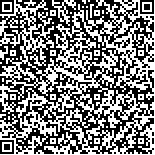下载中心
优秀审稿专家
优秀论文
相关链接
摘要

电磁监测试验卫星(张衡一号)共搭载3类8种科学载荷,第1类是用于电离层电磁场探测的载荷,包括高精度磁强计、感应式磁力仪和电场探测仪;第2类是用于原位等离子体参数探测的载荷,包括朗缪尔探针、等离子体分析仪和高能粒子探测器;第3类是用于电离层结构探测的载荷,包括GNSS掩星接收机和三频信标发射机。电磁卫星载荷探测方式均不同于以往的成像遥感卫星载荷,其数据处理方法和流程也有本质差异。本文首先介绍了中国电磁监测试验卫星产出的科学数据种类、数据分级和各级数据的定义,根据电磁监测试验卫星的特点,科学数据分为0—4级。随后描述了1—4级数据的总体处理流程,最后详细描述了8种载荷1—2级数据处理的方法、流程以及关键的数据处理算法。该数据处理方法和流程将应用于电磁监测试验卫星应用系统,作为数据处理分系统设计和研发的依据。
Many electromagnetic emissions related to earthquakes have been observed by using space-based monitoring systems in the past decades. Such systems can operate together with ground-based monitoring networks to improve the capability to detect abnormal information related to earthquakes. The first French-developed satellite, known as Detection of Electro-Magnetic Emission Transmitted from Earthquake Regions (DEMETER), is used for detecting ionospheric perturbations associated with earthquakes and volcanic eruptions. DEMETER has produced significant results, but the mission ended in 2010. However, the China Seismo-Electromagnetic Satellite (CSES) project began in 2013, and CSES will be launched in early 2018. CSES is proposed to be the first experimental satellite for earthquake-related electromagnetic emission monitoring from the ionosphere. This satellite is the first space observation platform within the 3D earthquake observation system in China. The objectives of CSES are as follows: (1) obtain worldwide data on space environment of the electromagnetic field, ionospheric plasma, and energetic particles; (2) monitor ionospheric perturbations in real-time when the satellite passes over Chinese territories and their adjacent area; and (3) investigate ionospheric perturbations that may be associated with earthquake activity, especially destructive phenomena. Eight scientific payloads, including search coil magnetometer, high precision magnetometer, electric field detector, GNSS occultation receiver, plasma analyzer package, Langmuir probe, high energy particle analyzer, and tri-band beacon, will be on board CSES to address the aforementioned objectives. All the payloads are used for monitoring the electromagnetic field, its disturbances, and the ionosphere environment. The payloads are also used to obtain the changing information of ionospheric structure below the satellite altitude. The detecting elements include electromagnetic field, plasma wave, electron density, electron temperature, ion temperature, ion composition, ion velocity distribution, and ion drift velocity. The CSES will provide an approach to studying the electromagnetic disturbances related to earthquakes, recognizing the regularity and mechanism of ionospheric disturbance, and studying atmosphere-ionosphere-lithosphere interactions. The data process method of CSES is a completely new research field for Chinese researchers, and the method has been developed in recent years. In this paper, we introduced the data catalog, data processing level, and the definitions thereof. The CSES data are divided into five levels (0—4). The general data processing procedure and the associated products were introduced. The data processing procedures of Levels 1 and 2 and the key algorithms of each scientific payload were described in detail.

